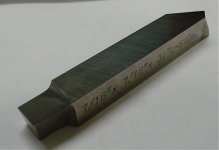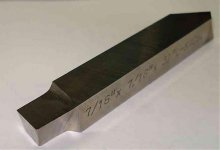Besides the obvious "buy a pre-tapered barrel"
Can anyone give me some pointers on tapering my 1.250 straight barrel in HV taper?
The only idea I have now is to offset the tail stock appropriate distance toward me so the diameter is .900 at 29 inches, and does not touch 5 inches from the bolt face. And chase the tool with the follower rest?
Any other ideas, I do not have a taper attachment by the way.
Ben
Can anyone give me some pointers on tapering my 1.250 straight barrel in HV taper?
The only idea I have now is to offset the tail stock appropriate distance toward me so the diameter is .900 at 29 inches, and does not touch 5 inches from the bolt face. And chase the tool with the follower rest?
Any other ideas, I do not have a taper attachment by the way.
Ben



